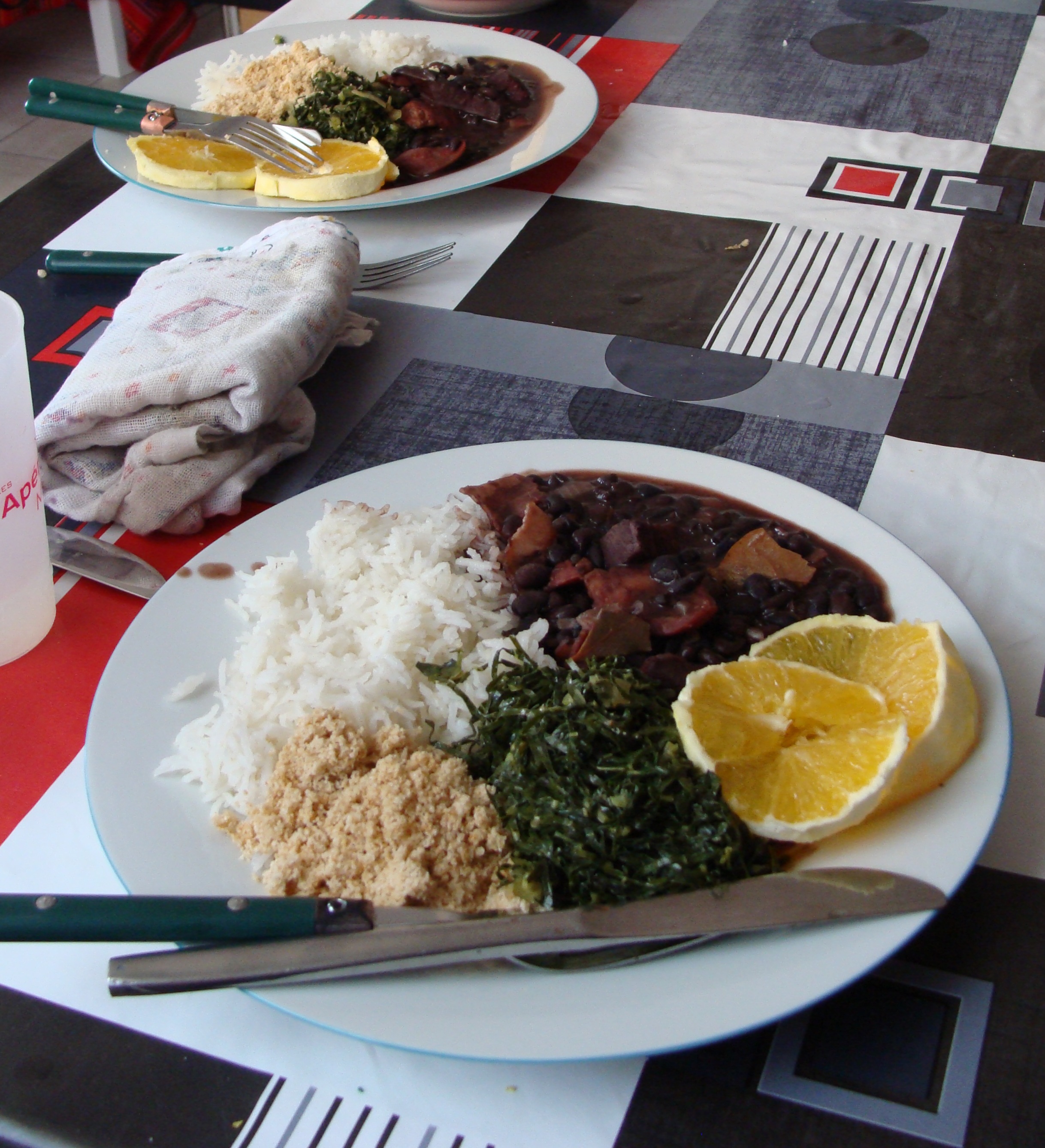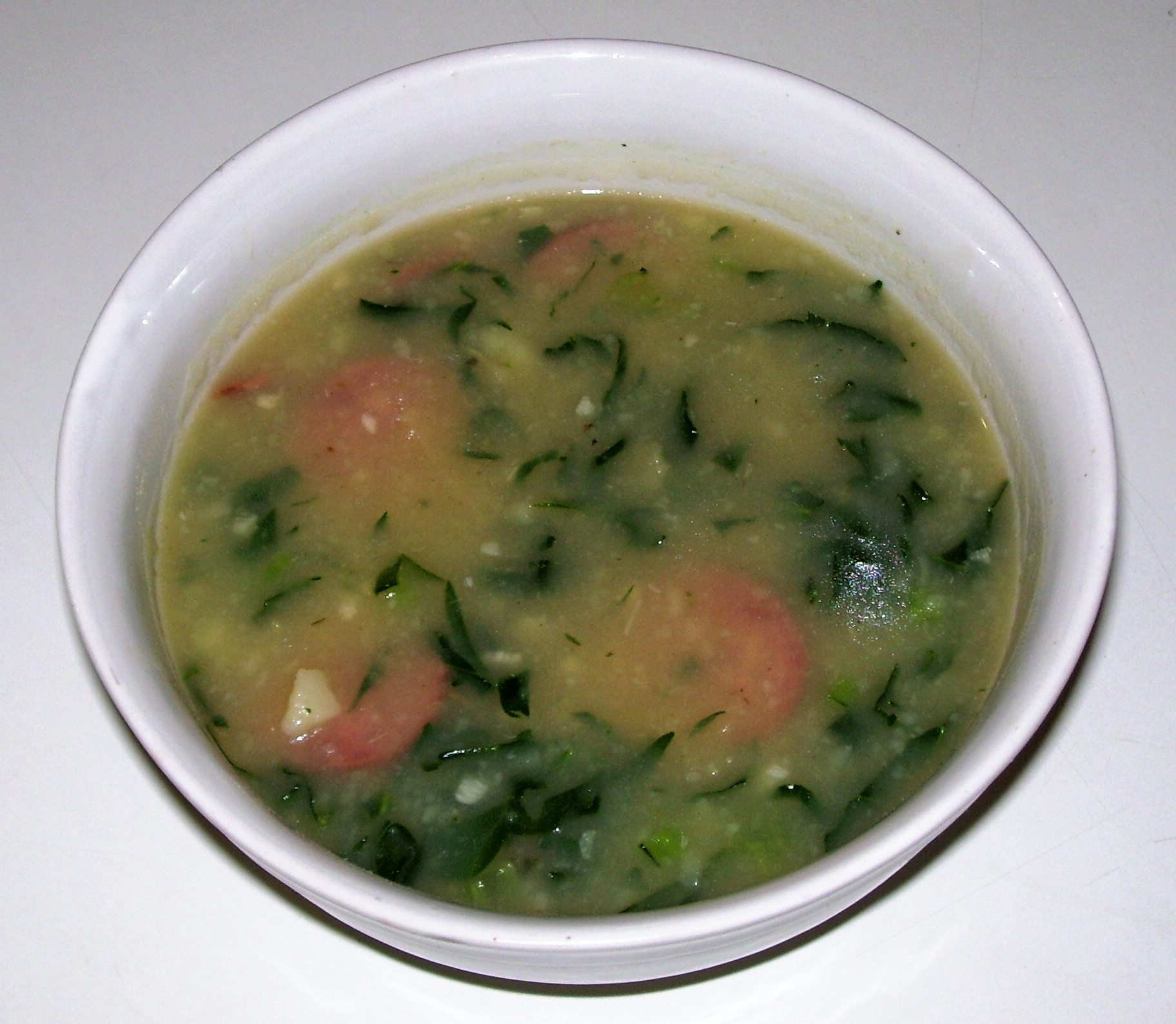|
Xarém Algarvio
Xarém or xerém is a thick soup or porridge from Lagoa Municipality (Algarve), Algarve, Portugal that is eaten in Cape Verde and Brazil as well. It has a corn flour base combined with other traditional ingredients which vary by region. The dish is prepared using corn meal, clams or sardines, and grilled meats. The Algarvian version is most commonly prepared using clams. Etymology The words "xerém" and "xarém" have no known etymological origin, though there are two hypotheses for the origin of the words: *"xerém" and "xarém" from the Arabic word "zerem" meaning "grain potatoes." *"xerém" could be derived from a Yoruba language, Yoruba word, ''xe'ree'', meaning a rattle used in Orisha Shango. Brazil It is a traditional dish in the Northeast Region, Brazil, Northeast Region of Brazil, especially in Pernambuco. The Brazilian dish contains coarsely ground corn kernels, and it is similar to polenta. It is also popular in Minas Gerais, where it is not called "xerém" but "homi ... [...More Info...] [...Related Items...] OR: [Wikipedia] [Google] [Baidu] |
Porridges
Porridge is a food made by heating, soaking or boiling ground, crushed or chopped starchy plants, typically grain, in milk or water. It is often cooked or served with added flavourings such as sugar, honey, fruit, or syrup to make a sweet cereal, or it can be mixed with spices, meat, or vegetables to make a Savoury (dish), savoury dish. It is usually served hot in a bowl, depending on its consistency. Oat porridge, (known as oatmeal in North America) is one of the most common types of porridge. Gruel is a thinner version of porridge and congee is a savoury variation of porridge of Asian cuisine, Asian origin. Type of grains The term "porridge" is used in British English (Britain, Ireland, Australia and New Zealand) specifically for oatmeal. This is a hot mixture of oatmeal or oats slowly cooked with water or milk. It is typically eaten for breakfast by itself or with other ingredients, including salt, sugar, fruit, milk, cream, or butter. Other grains used for porridge include ... [...More Info...] [...Related Items...] OR: [Wikipedia] [Google] [Baidu] |
Maize Dishes
Maize (; ''Zea mays''), also known as corn in North American English, is a tall stout grass that produces cereal grain. It was domesticated by indigenous peoples in southern Mexico about 9,000 years ago from wild teosinte. Native Americans planted it alongside beans and squashes in the Three Sisters polyculture. The leafy stalk of the plant gives rise to male inflorescences or tassels which produce pollen, and female inflorescences called ears. The ears yield grain, known as kernels or seeds. In modern commercial varieties, these are usually yellow or white; other varieties can be of many colors. Maize relies on humans for its propagation. Since the Columbian exchange, it has become a staple food in many parts of the world, with the total production of maize surpassing that of wheat and rice. Much maize is used for animal feed, whether as grain or as the whole plant, which can either be baled or made into the more palatable silage. Sugar-rich varieties called sweet cor ... [...More Info...] [...Related Items...] OR: [Wikipedia] [Google] [Baidu] |
Cape Verdean Cuisine
The cuisine of Cape Verde is a West African cuisine largely influenced by Portuguese, Southern and Western European and West African cuisine. Cape Verde was a colony of Portugal from its colonization until 1975. Because the archipelago is inside the Atlantic Ocean, fish is very important in Cape Verdean cooking. Overview One of the most important aspects of Cape Verdean culture is the beverage ''grogue'', a strong rum made from distilled sugar cane on the islands of Santo Antao and Santiago. The beverage is made in towns such as Paul on Santo Antao and Cidade Velha on Santiago using a ''trapiche''. A variation of the drink is ''ponche'' (punch) which is sweetened with condensed milk or sugarcane molasses. Due to the intoxication on consuming ''grogue'', it is consumed by many Cape Verdean musicians seeking inspiration. Corn and beans are staples of Cape Verdean cuisine. Also popular are rice, fried potatoes, cassava and vegetables such as carrots, kale, squash, fish and meat s ... [...More Info...] [...Related Items...] OR: [Wikipedia] [Google] [Baidu] |
Brazilian Cuisine
Brazilian cuisine is the set of cooking practices and traditions of Brazil, and is characterized by European cuisine, European, Amerindian, African tribes, African, and Asian (Levantine cuisine, Levantine, Japanese food, Japanese, and most recently, Chinese food, Chinese) influences. It varies greatly by region, reflecting the country's mix of native and immigrant populations, and its continental size as well. This has created a national cuisine marked by the preservation of regional differences. Ingredients first used by native peoples in Brazil include cashews, cassava, ''guaraná'', ''açaí'', ''Dipteryx odorata, cumaru,'' and ''tucupi''. From there, the many waves of immigrants brought some of their typical dishes, replacing missing ingredients with local equivalents. For instance, the European immigrants (primarily from Portuguese Brazilian, Portugal, Italian Brazilian, Italy, Brazilians of Spanish descent, Spain, German Brazilian, Germany, Dutch Brazilian, Netherlands, Po ... [...More Info...] [...Related Items...] OR: [Wikipedia] [Google] [Baidu] |
Portuguese Cuisine
Portuguese cuisine () consists of the traditions and practices of cooking in Portugal. The oldest known book on Portuguese cuisine, entitled ''Livro de Cozinha da Infanta D. Maria de Portugal'', from the 16th century, describes many popular dishes of meat, fish, poultry and others. ''Culinária Portuguesa'', by António-Maria De Oliveira Bello, better known as Olleboma, was published in 1936. Despite being relatively restricted to an Atlantic Ocean, Atlantic, Celtic sustenance, the Portuguese cuisine also has strong French cuisine, French and Mediterranean cuisine, Mediterranean influences. The influence of Portugal's spice trade in the Portuguese East Indies, East Indies, Africa, and the Americas is also notable, especially in the wide variety of spices used. These spices include ''piri piri'' (small, fiery chili peppers), white pepper, black pepper, saffron, paprika, clove, allspice, cumin, cinnamon and nutmeg, used in meat, fish or multiple savoury dishes from Continental Po ... [...More Info...] [...Related Items...] OR: [Wikipedia] [Google] [Baidu] |
List Of Soups
This is a list of notable soups. Soups have been made since ancient times. Some soups are served with large chunks of meat or vegetables left in the liquid, while others are served as a broth. A broth is a flavored liquid usually derived from boiling a type of meat with bone, a spice mix, or a vegetable mix for a period of time in a stock. A potage is a category of thick soups, stews, or porridges, in some of which meat and vegetables are boiled together with water until they form a thick mush. Bisques are heavy cream soups traditionally prepared with shellfish, but can be made with any type of seafood or other base ingredients. Cream soups are dairy based soups. Although they may be consumed on their own, or with a meal, the canned, condensed form of cream soup is sometimes used as a quick sauce in a variety of meat and pasta convenience food dishes, such as casseroles. Similar to bisques, chowders are thick soups usually containing some type of starch. Coulis were ... [...More Info...] [...Related Items...] OR: [Wikipedia] [Google] [Baidu] |
List Of Portuguese Dishes
This is a list of Portuguese dishes and foods. Despite being relatively restricted to an Atlantic Ocean, Atlantic sustenance, Portuguese cuisine has many Mediterranean cuisine, Mediterranean influences. Portuguese cuisine is famous for seafood. The influence of Portugal's Portuguese Empire, former colonial possessions is also notable, especially in the wide variety of spices used. These spices include ''piri piri'' (small, fiery chili peppers), black pepper and white pepper, as well as cinnamon, vanilla, clove, cumin, allspice and saffron. Olive oil is one of the bases of Portuguese cuisine, which is used both for cooking and flavouring meals. Garlic is widely used, as are herbs, such as bay leaf, coriander, oregano, thyme, rosemary and parsley, being the most prevalent. Portuguese beverages are also included in this list. Portuguese dishes * Açorda de Bacalhau * Amêijoas à Bulhão Pato * Arroz de Bacalhau * Arroz de Marisco * Duck rice, Arroz de Pato - A Portuguese v ... [...More Info...] [...Related Items...] OR: [Wikipedia] [Google] [Baidu] |
Tallow
Tallow is a rendered form of beef or mutton suet, primarily made up of triglycerides. In industry, tallow is not strictly defined as beef or mutton suet. In this context, tallow is animal fat that conforms to certain technical criteria, including its melting point. Commercial tallow commonly contains fat derived from other animals, such as lard from pigs, or even from plant sources. The solid material remaining after rendering is called cracklings, greaves, or graves. It has been used mostly for animal food, such as dog food. In the soap industry and among soap-making hobbyists, the name tallowate is used informally to refer to soaps made from tallow. Sodium tallowate, for example, is obtained by reacting tallow with sodium hydroxide (lye, caustic soda) or sodium carbonate (washing soda). It consists chiefly of a variable mixture of sodium salts of fatty acids, such as oleic and palmitic.Ruth Winter (2007): ''A Consumerýs Dictionary of Household, Yard and Office ... [...More Info...] [...Related Items...] OR: [Wikipedia] [Google] [Baidu] |
Olhão
Olhão (), officially known as Olhão da Restauração, is a city and concelho, municipality in the Algarve region of southern Portugal. The population of the municipality in 2011 was 45,396, in an area of . Located near the regional capital Faro, Portugal, Faro and forming a single urban agglomeration, it is a fishing port and tourist center. Along with Faro, Loulé and Tavira Municipality, Tavira, Olhão forms a conurbation from the eastern and central Algarve. History Since pre-history, Olhão has had vestiges of human occupation, although the oldest written record dates only from 1378, referring to a place called ''Olham''. The estuary and abundance of water were decisive factors that influenced fishermen, at the beginning of the 17th century, to congregate along the beach of Olhão. The settlement developed even as officials in Faro discouraged concentration along this coast. Yet, after the middle of the 17th century, growth was driven by the protection offered by the Fort ... [...More Info...] [...Related Items...] OR: [Wikipedia] [Google] [Baidu] |
Algarves
The Algarve (, , ) is the southernmost NUTS II region of continental Portugal. It has an area of with 467,495 permanent inhabitants and incorporates 16 municipalities ( ''concelhos'' or ''municípios'' in Portuguese). The region has its administrative centre in the city of Faro, where both the region's international airport and public university, the University of Algarve, are located. The region is the same as the area included in the Faro District and is subdivided into two zones, one to the West ( Barlavento) and another to the East ( Sotavento). Tourism and related activities are extensive and make up the bulk of the Algarve's summer economy. Production of food which includes fish and other seafood, as well as different types of fruit and vegetables such as oranges, figs, plums, carob pods, almonds, avocados, tomatoes, cauliflowers, strawberries, and raspberries, are also economically important in the region. Although Lisbon surpasses the Algarve in terms of tourism reven ... [...More Info...] [...Related Items...] OR: [Wikipedia] [Google] [Baidu] |








